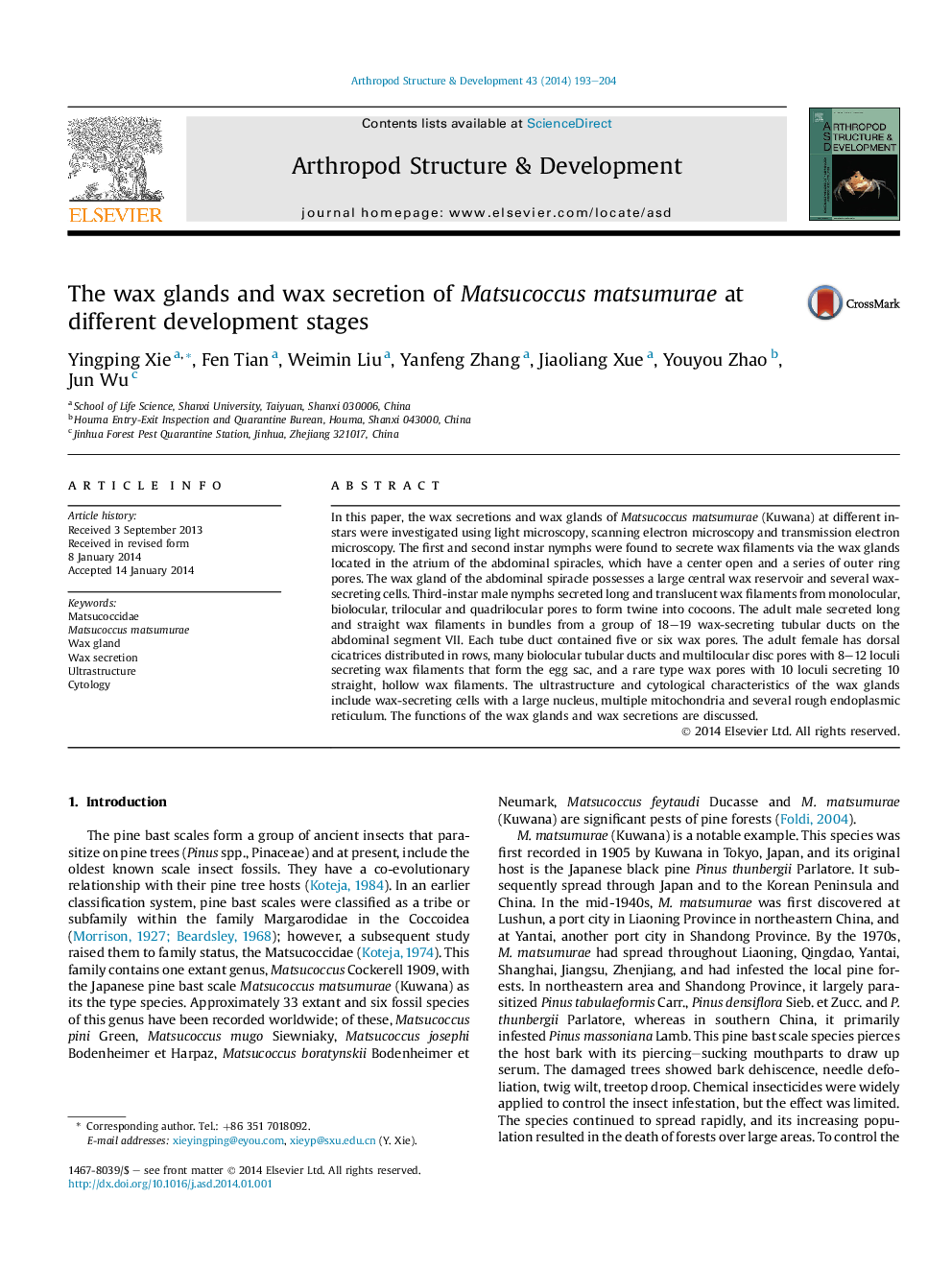| Article ID | Journal | Published Year | Pages | File Type |
|---|---|---|---|---|
| 2778594 | Arthropod Structure & Development | 2014 | 12 Pages |
•1st and 2nd instar secretes wax filaments from wax gland beneath abdominal spiracles.•3rd-instar male secreted long wax filaments twine into cocoon.•Adult males secrete long, straight wax filament by tube ducts on abdomen segment VII.•Adult females have cicatrices, secrete wax filaments by multilocular disc pore.•Wax-secreting cells have big nucleolus, mitochondria and rough endoplasmic reticulum.
In this paper, the wax secretions and wax glands of Matsucoccus matsumurae (Kuwana) at different instars were investigated using light microscopy, scanning electron microscopy and transmission electron microscopy. The first and second instar nymphs were found to secrete wax filaments via the wax glands located in the atrium of the abdominal spiracles, which have a center open and a series of outer ring pores. The wax gland of the abdominal spiracle possesses a large central wax reservoir and several wax-secreting cells. Third-instar male nymphs secreted long and translucent wax filaments from monolocular, biolocular, trilocular and quadrilocular pores to form twine into cocoons. The adult male secreted long and straight wax filaments in bundles from a group of 18–19 wax-secreting tubular ducts on the abdominal segment VII. Each tube duct contained five or six wax pores. The adult female has dorsal cicatrices distributed in rows, many biolocular tubular ducts and multilocular disc pores with 8–12 loculi secreting wax filaments that form the egg sac, and a rare type wax pores with 10 loculi secreting 10 straight, hollow wax filaments. The ultrastructure and cytological characteristics of the wax glands include wax-secreting cells with a large nucleus, multiple mitochondria and several rough endoplasmic reticulum. The functions of the wax glands and wax secretions are discussed.
